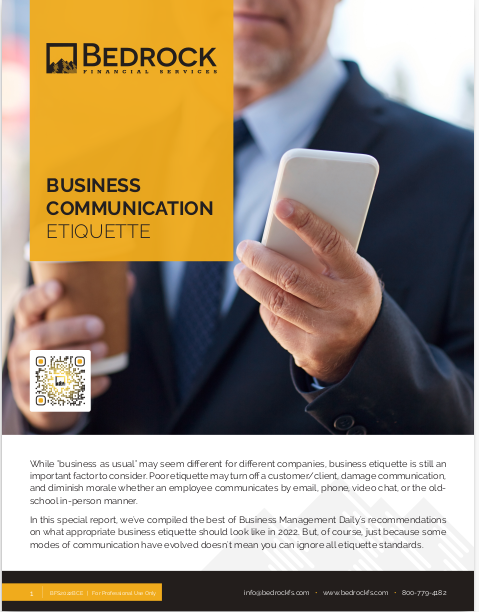Key Takeaways
-
In 2025, clients are more skeptical than ever due to digital noise, misinformation, and broken promises. Building trust as an independent insurance agent means adopting long-term, layered strategies that prove your value through actions, not just words.
-
Transparency, consistency, and human connection are the pillars that allow you to stand out in a low-trust environment. If you don’t lead with empathy and clarity, your message won’t land—no matter how good your product is.
The Trust Crisis You’re Working Against
Today’s client isn’t just cautious—they’re exhausted. Years of online manipulation, fine print surprises, and corporate over-promising have created a public that defaults to mistrust. As a result, even when you do everything right, clients often meet you with a wall of hesitation. They’re not doubting you, personally—they’re doubting the entire category you work in.
This isn’t a moral failing on their part. It’s a defense mechanism that’s been reinforced over years. Understanding this gives you a starting point: your job is not just to present what you offer, but to dismantle that wall before a meaningful conversation can even begin.
Trust Is Now a Process, Not a Moment
Gone are the days when a firm handshake or one good referral could earn you instant trust. In 2025, trust is built in micro-moments, across multiple interactions. That’s why your strategy has to include:
-
Small, credible touches over time
-
Clear alignment between what you say and what you do
-
The willingness to not sell when it’s not the right time
-
A long view of the relationship, not just the transaction
Think of trust like a savings account. Every interaction is either a deposit or a withdrawal. Your job is to make sure the balance is always growing.
1. Start With Your Digital Footprint
Before clients ever meet you, they research you. That’s their first point of contact—and your first opportunity to build (or lose) trust. Inconsistent branding, vague language, or outdated content instantly raise red flags. You must assume they’re searching for your name, your business, and the answers to their problems before they ever pick up the phone.
To strengthen this first impression:
-
Ensure your website is current, clear, and client-focused
-
Use photos that are recent and authentic—not stock imagery
-
Be upfront about who you help and how you help them
-
Include real testimonials that address specific client concerns
2. Ditch the Hype Language
In an age of skepticism, people don’t respond well to exaggerated claims. Words like “best,” “unbeatable,” or “guaranteed” often backfire. They sound like marketing, not truth.
Instead:
-
Use plain, transparent language
-
Explain what something does, not just what it is
-
Tell the client what to expect in clear steps
-
Acknowledge limitations when relevant (e.g., “This may not be the right fit if…”)
Clients reward humility. It shows you’re self-aware and more focused on fit than on a sale.
3. Treat the First Call Like a Trust Test
Your first conversation with a prospect sets the tone for everything. In a low-trust world, this isn’t just about being nice. It’s about showing that you:
-
Understand what they’re going through
-
Listen more than you talk
-
Don’t push past their objections
-
Offer next steps without pressure
Don’t try to prove your expertise. Show your curiosity. Ask them to tell their story. Let them guide the pace. This disarms fear and builds trust naturally.
4. Make Transparency a Habit, Not a Slogan
Transparency doesn’t mean telling people everything. It means giving them the right information at the right time—especially when it’s inconvenient for you.
Here’s how to do that:
-
Break down your process into timelines: what happens in week one, week two, etc.
-
Explain common pitfalls or client misunderstandings before they happen
-
Show your compensation model when appropriate—how you get paid, why that matters
-
Tell them when a cheaper, simpler solution exists
This style of honesty creates safety. The moment clients feel they have the full picture, they begin to relax.
5. Use Repetition—Not for Persuasion, But for Reassurance
In high-trust relationships, repetition helps reinforce a sense of clarity. In low-trust relationships, it’s essential. People don’t remember everything you tell them, especially if their brain is still in defense mode.
When you:
-
Repeat the next steps at the end of each call
-
Summarize conversations in follow-up emails
-
Revisit their goals in each meeting
…you’re not being redundant. You’re showing that you’re dependable, detail-oriented, and committed to them, not just the sale.
6. Be Willing to Say No
Nothing signals integrity faster than walking away from a deal that isn’t right. Saying no, or recommending a different solution, tells your client: “I’m here for your outcome, not my quota.”
It’s rare. And in 2025, rare actions stand out.
When you decline a case that’s not a fit or redirect someone elsewhere, word travels. People start seeing you as someone who does the right thing—even when it costs you. That’s reputation gold.
7. Don’t Just Show Results—Show How You Got There
In a world saturated with polished reviews and curated testimonials, clients are starting to tune out results that feel too perfect. Instead of showing off only the outcome, walk them through the journey.
For instance:
-
Break down how long it took to get to a decision
-
Talk about the back-and-forths and client concerns
-
Use testimonials that show emotional honesty (e.g., “I was hesitant at first…”)
This transparency in process makes the outcome feel more believable. It shows that real people, with real doubts, trusted you—and it worked out.
8. Consistency Over Time Builds Emotional Trust
While logic gets the first foot in the door, emotional trust is what sustains long-term relationships. And emotional trust comes from consistency.
This includes:
-
Responding to emails within a predictable timeframe
-
Following through on promises (no matter how small)
-
Remembering details from past conversations
-
Maintaining the same tone of care whether they’re a client or just a lead
Clients don’t just want an expert. They want to feel remembered, respected, and safe. You earn that by showing up the same way, every time.
9. Embrace Accountability as a Differentiator
Everyone makes mistakes. What sets you apart is how you handle them. Accountability is one of the rarest and most powerful trust-builders in the industry today.
Here’s how to lead with it:
-
Acknowledge errors before the client notices
-
Offer solutions proactively
-
Never shift blame—own what’s yours
-
Follow up after the fix
This isn’t just about damage control. It’s about showing your client they can count on you—especially when things go sideways.
Why Trust Still Wins in a Distrustful Time
Despite how cynical the world may seem, trust remains a competitive edge that can’t be bought or faked. People still want to believe in people. They just need more proof—and more patience—before they get there.
You’re not just offering insurance. You’re offering reassurance. You’re selling a feeling of safety. In 2025, that’s one of the hardest things to earn—and the most powerful thing to own.
If you’re ready to stop chasing leads and start building relationships, we can help. At Bedrock Financial Services, we support independent agents with smart branding, appointment-setting tools, and proven systems that help you earn trust faster and keep it longer.
Let us show you what happens when trust becomes your strategy.







